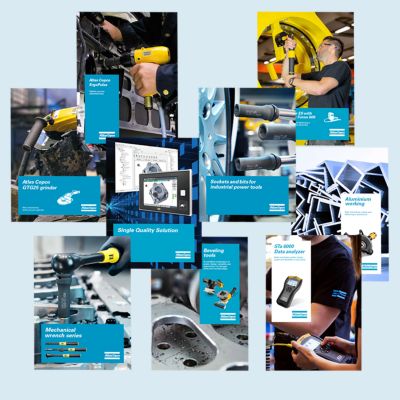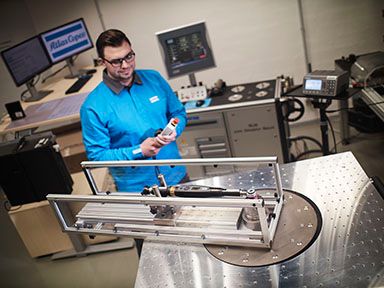Handling a drill is by no means as difficult as it may seem. This article summarizes useful hints with the most common topics you should think about before you start working with drills.
✔ Always drill with sharp bits! This cannot be overemphazised, high quality bits and a good bit grinding equipment can make you save energy and time.
✔ The right point can reduce the feed force by 30%. The less force you have to use to press the bit against the workpiece, the easier it is to steer the drill. Thus, the hole is straight and round. Bearing in mind, always use split point bits or thinned web bits.

✔ Predrill the large holes. When the hole diameter is higher than 5-6 mm in steel the feed force necessary starts to exceed that which can be obtained with handheld drilling. More than 70% of the feed force is consumed at the chisel edge. If you predrill with smaller bit diameter than the final one you can reduce the feed force just as much. Very large holes can be predrilled in several stages.
✔ Locate the hole in the exact place. When you start drilling, the bit easily slips out of position, specially if you are using bits with a chisel edge. Thereby, you can avoid it by using split-point or web thinning bits, marking the center with a center punch or using a drill that can be creep-started. You can also use templates, a helpful way when several holes are to be positioned in specific places in relation to one another.
✔ When drilling through two parts simultaneously, keep them fixed together. This is very common when using handheld drills. For the large and heavy structure it may be a good idea to secure the parts together with a bolt or screw in the first hole before the other holes are drilled.
✔ Again about predrilling… About 70% of the feed force is consumed in getting the chisel edge (the first bit part to be drilled) to work its way through the material. Consequently, as soon as the point has made its way through, the penetration process becomes much easier and the bit can pass through quickly, what means that it probably will not have time to cut the hole cleanly. And the bit jams. Avoid this problem by predrilling.
✔ Drilling deep holes. When the length of the hole is 5x bigger than the bit diameter, the bit must be withdrawn at regular intervals for chip removal. This procedure must be repeated as frequently as the hole gets deeper. Dip the bit in oil or water to cool it.
✔ Get quality for your hole. Basically, the quality is related to roundness/straightness, angular trueness and burrs on the back of the hole. You can get better quality holes by choosing the right type of drill. It’s also important to have a perpendicular angle to the work surface to have a right-angled hole. You can also avoid burrs on the back of the hole by drilling against an underlay and making sure that the bit is sharp.
✔ Crosswise holes in shafts and pipes. Mark up the hole with a center punch
Secure the workpiece firmly in a position that gives you a good working posture and you can align the bit easily.
It is also recommended to use a fixture that steers the bit straight through the diameter of the cylinder.

✔ Sloping holes. Start off by drilling a recess, using a bit with twice as large a diameter as the diameter of the sloping hole. This provides you with a good starting point from which to drill the sloping hole.







